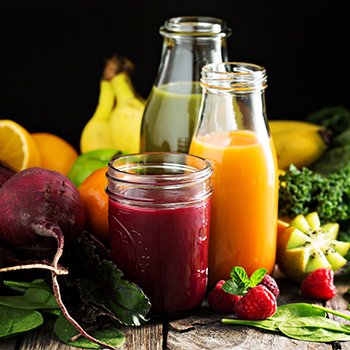การประยุกต์ใช้เทคโนโลยีพลาสมาเย็นสำหรับกระบวนการแปรรูปอาหารและเครื่องดื่ม The Application of Cold Plasma Technology for Food and Beverage Processing
2190 Views |

การประยุกต์ใช้เทคโนโลยีพลาสมาเย็นสำหรับกระบวนการแปรรูปอาหารและเครื่องดื่ม
The Application of Cold Plasma Technology for Food and Beverage Processing
Translated and Compiled By: รวิพร พลพืช
Rawiporn Polpued
Senior Writer
Food Focus Thailand Magazine
editor@foodfocusthailand.com
พลาสมาจัดเป็นสถานะที่สี่ของสสารนอกเหนือจากสถานะของแข็ง ของเหลว และแก๊ส โดยพลาสมาประกอบด้วยส่วนผสมของแก๊สที่เกิดจากการแตกตัวเป็นไอออนทั้งหมดหรือแตกตัวเป็นไอออนบางส่วน ซึ่งมีทั้งอนุภาคโฟตอน อิเล็กตรอน อนุภาคที่มีประจุบวก อนุภาคที่มีประจุลบ อนุภาคที่มีสมบัติเป็นกลาง และอนุมูลอิสระ โดยพลาสมาสามารถเกิดขึ้นได้ด้วยการให้พลังงานไม่ว่าจะเป็นพลังงานความร้อน ลำแสงพลังงานสูงและสนามไฟฟ้ากำลังสูงซึ่งผ่านไปยังแก๊สที่มีคุณสมบัติเป็นกลาง (อากาศ แก๊สออกซิเจน และแก๊สไนโตรเจน) ส่งผลให้เกิดการแตกตัวของโมเลกุลของแก๊สและการแตกตัวเป็นไอออนของอะตอม โดยทั่วไปกระบวนการสร้างพลาสมาจะเกิดขึ้นเมื่อแก๊สได้รับพลังงานจนทำให้กลายเป็นอนุมูลอิสระจากออกซิเจน (O2+, O-, O+, O3, H2O2) และไนโตรเจน (N+, N2+,NO, N•) ซึ่งอนุมูลอิสระเหล่านี้จะทำปฏิกิริยากับองค์ประกอบในอาหารและเกิดการเปลี่ยนแปลงคุณสมบัติของอาหาร โดยจำนวนประจุบวกและประจุลบในแก๊สจะมีค่าเป็นตัวเลขเท่ากันเสมอ หรืออยู่ในสัดส่วนที่ทำให้ประจุสุทธิเป็นศูนย์ ดังนั้น จึงทำให้พลาสมามีคุณสมบัติเป็นกลางทางไฟฟ้า
ศักยภาพของเทคโนโลยีพลาสมาเย็นในอุตสาหกรรมอาหาร
1. ลดการปนเปื้อนของเชื้อจุลินทรีย์
พลาสมามีผลต่อองค์ประกอบและการทำงานของเซลล์จุลินทรีย์ ซึ่งสามารถยับยั้งเชื้อจุลินทรีย์ก่อโรคในอาหารได้ โดยเฉพาะ Escherichia coli, Listeria monocytogenes และ Salmonella sp. โดยอนุมูลอิสระที่เกิดขึ้นจากกระบวนการพลาสมาเย็นจะทำให้ไลโปโปรตีน (Lipoproteins) และเปบทิโดไกลแคน (Peptidoglycan) ของจุลินทรีย์แกรมลบเกิดความเสียหายจนทำให้ของเหลวภายในเซลล์รั่วไหล ในขณะที่อนุมูลอิสระที่เกิดขึ้นจะทำให้เกิดการเปลี่ยนแปลงในระดับดีเอ็นเอของจุลินทรีย์แกรมบวก
2. เสริมคุณลักษณะทางประสาทสัมผัส
เทคโนโลยีพลาสมาเย็นมีผลต่อสี เนื้อสัมผัส และกลิ่นรสของอาหาร โดยเม็ดสี (ธรรมชาติหรือสังเคราะห์) รวมถึงปฏิกิริยาทางเคมีของอาหารจะเกิดการเปลี่ยนแปลงในระหว่างกระบวนการพลาสมาเย็น โดยเฉพาะในน้ำผลไม้ เช่น การสูญเสียแคโรทีนอยด์ในน้ำมะเขือเทศ การเปลี่ยนแปลงเป็นสีเหลืองสว่างในน้ำแอปเปิล และการรักษาสีชมพูแดงในเนื้อโดยไม่ต้องเติมสารเคมี
Plasma is the fourth state of matter besides solids, liquids, and gases (Figure 1). Plasma contains a mixture of entirely or partially ionized gases, including photons, electrons, positive and negative ions, neutral particles, and free radicals. Plasma is generated by providing excited energy such as thermal energy, energetic beam, and electric field through neutral gases (air, oxygen gas, and nitrogen gas), resulting in the dissociation of gas molecules and ionization of atoms. When a gas obtained higher energy, it normally produced oxygen free radicals (O2+, O-, O+, O3, H2O2) and nitrogen free radicals (N+, N2+, NO, N•). These free radicals will react with elements in food and change the food properties. The number of positive and negative ions in the gas system is always equal or in a proportion that provides the net charge zero; therefore, plasma behaves electrically neutral.
Potential of Cold Plasma Technology for the Food Industry
1. Reduce microbial contamination
Plasma affects the components and function of microbial cells, which can inhibit pathogenic microorganisms in food, especially Escherichia coli, Listeria monocytogenes, and Salmonella sp. The generated free radicals from the cold plasma cause the deterioration of lipoproteins and peptidoglycan of gram-negative bacteria, leading to cell lysis, while free radicals cause changes in DNA levels in gram-positive bacteria.
2. Enhance sensory characteristics
Cold plasma technology affects the color, texture, and flavor of food. Pigments (natural or synthetic) and chemical reactions of food are changed during the cold plasma treatment, especially in fruit juices, such as the loss of carotenoids in tomato juice, the bright yellow increment in apple juice, and the stable pink-red color in the meat without chemicals addition.






